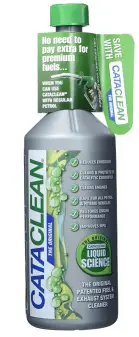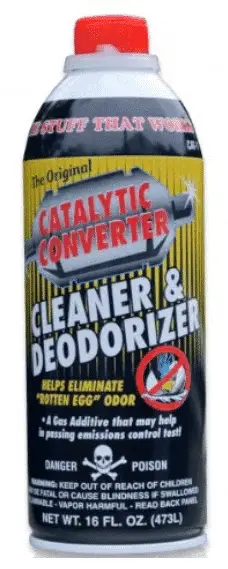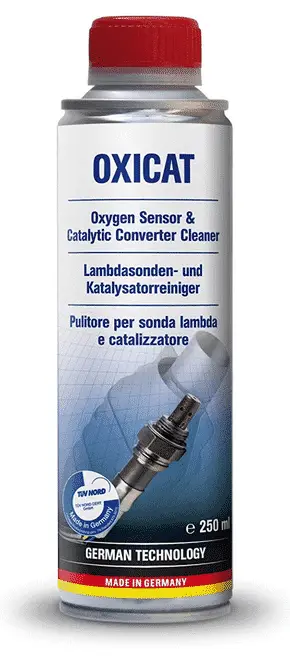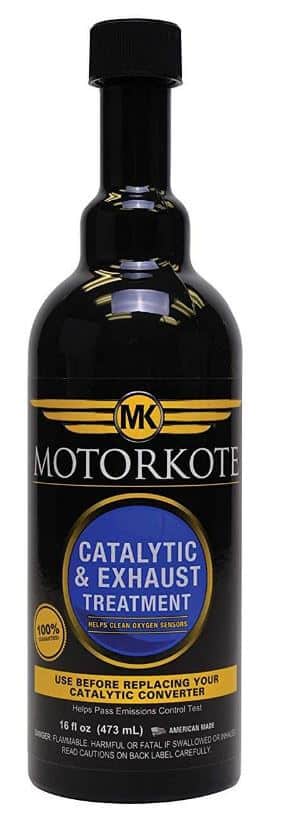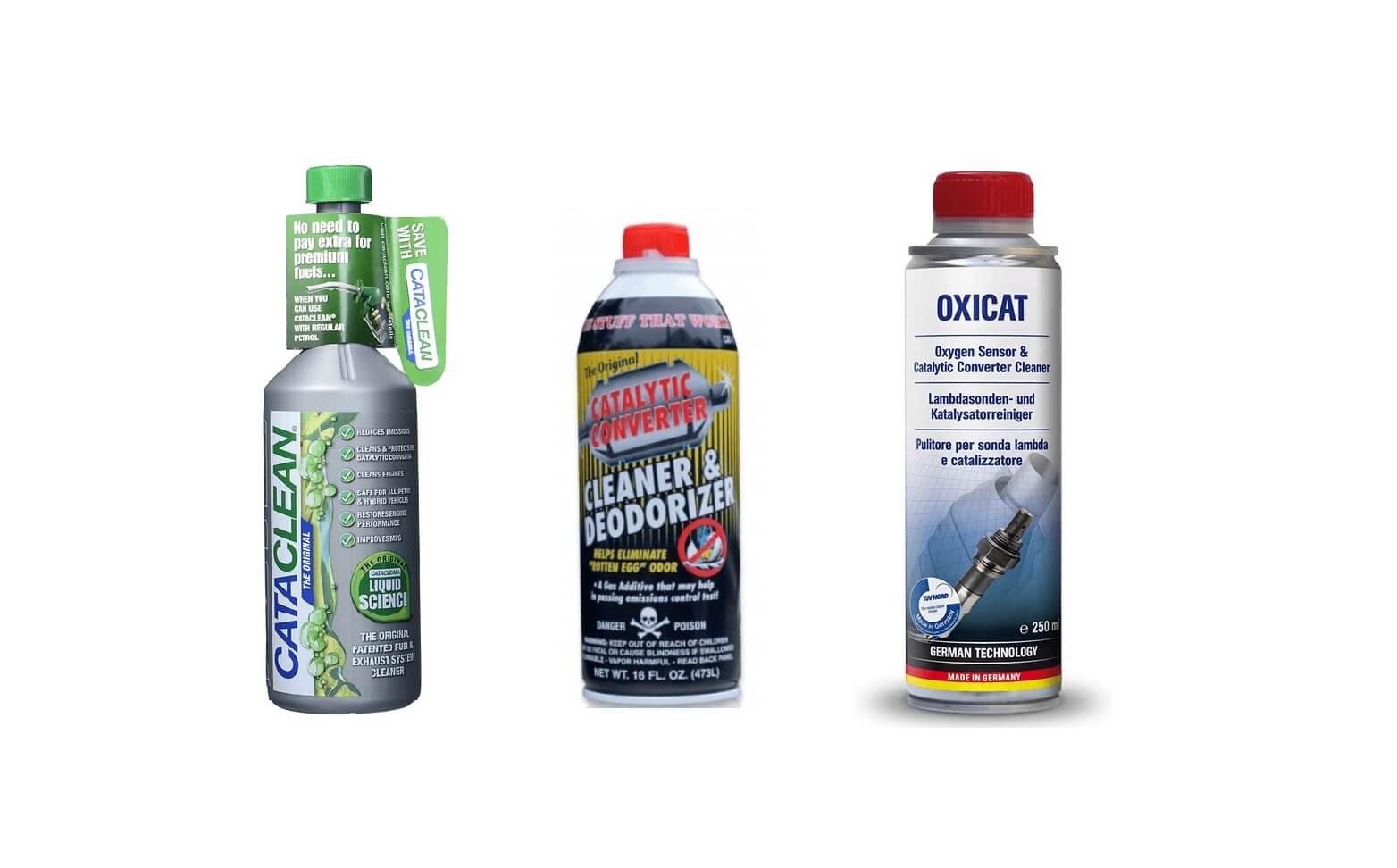
Table of Contents
Catalytic converters (CC) are an exhaust emissions control device that needs regular cleaning to perform at their best. A catalytic converter’s job is to clean the toxic gases and pollutants in the exhaust gas into less toxic pollutants but whose responsibility is it to clean the catalytic converter itself? Yours! In this guide, we review the best catalytic converter cleaners on the market.
Why Does A Catalytic Converter Require Cleaning?
Catalytic converters are most commonly found in vehicles whether they are powered by diesel or gasoline. You may also encounter some kerosene heaters, and stoves have a CC, but this guide is strictly constructed towards helping vehicle owners maintain their emissions exhaust system by selecting and using the best catalytic converter cleaner.
Some folks ask why does a catalytic converter require cleaning? Well, the straightforward answer to the question is to prevent catalyst poisoning, improve exhaust flow, and to reduce damage to the device by lowering the chances of it rusting.
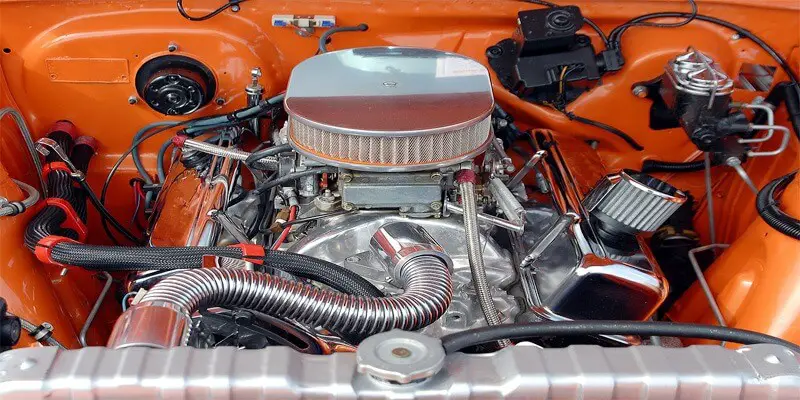
Catalytic converter cleaner
Catalyst poisoning occurs when substances that contain parts of the exhaust penetrate the working surfaces of the converter. As a result, these contaminants of which the most common are lead, sulfur, manganese, and silicon, eat away at the walls of the converter up to the point the device renders itself useless, results in a breakdown (not on the road if you’re lucky), and may require an overhaul of the entire emissions system (worst case scenario).
Some good mechanical repair shops may include a catalytic converter cleaning service as part of a regular oil change, but if you’re like most vehicle owners that rarely choose the premium service, then you’re probably not among the ones who get their catalytic converter cleaned often enough.
Furthermore, if your converter is not catalyzing soot deposits, it will affect the EGR, SCR, and DPF if you have one. High levels of unburned hydrocarbons will increase the temperature of the converter which will severely restrict exhaust flow. In some cases, it has led to the deactivation of the catalytic converter which ignited a fire. You can read about it more, here.
What Catalytic Converter Cleaners Should I Use?
Luckily, in most cases, the catalytic converter can be cleaned using various methods, especially if caught on time. There is a tried out old school method, that involves a lacquer thinner and a lot of engine revving.
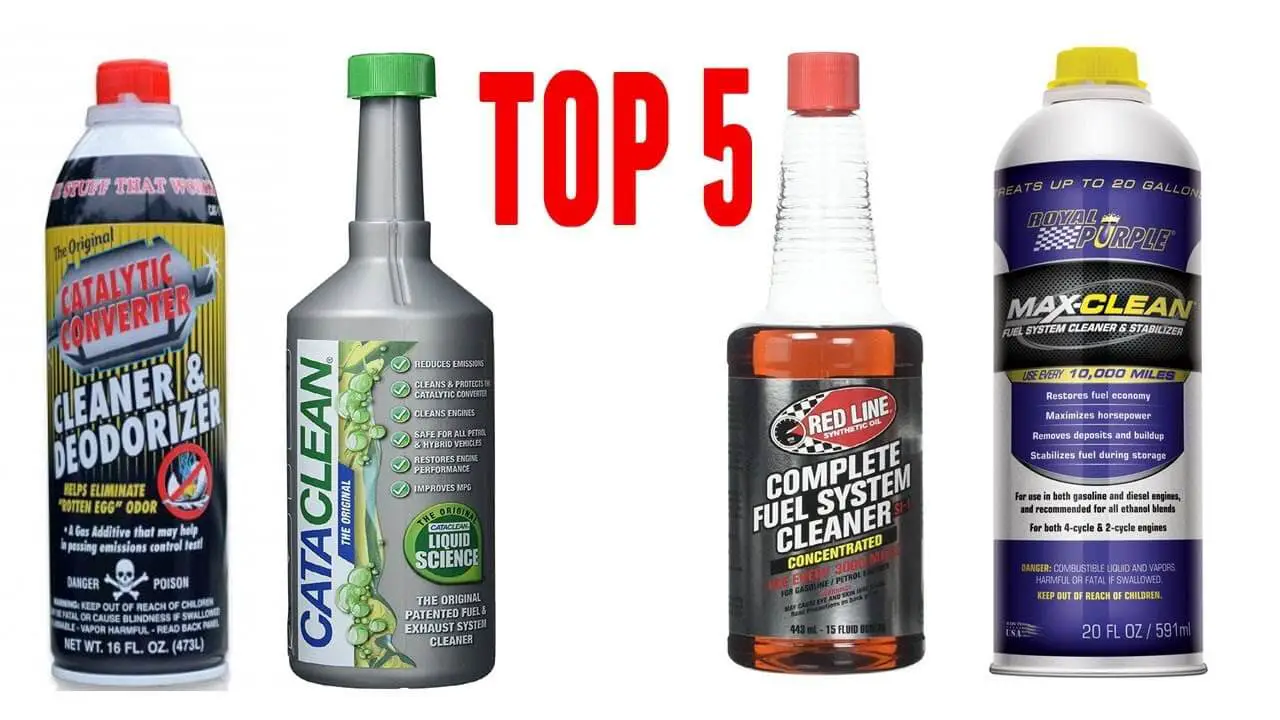
Best ctalytic converters
Best Catalytic Converter Cleaners
If we’ve convinced you that you NEED to get a catalytic converter cleaner and pump it into your fuel tank so that it mixes with the fuel and cleans your CC, then you must use only the best.
Our list of the best catalytic converter cleaners will aid you in making the right choice according to your vehicle and fuel type.
This is our number one pick for the best catalytic converter cleaner on the market. It reduces carbon build up in the CC and even helps your oxygen sensor, fuel injector, and cylinder get a good rinse out too! The multiple benefits it provides makes it a must-have for your diesel car or truck. Some benefits it provides include:
- Lowers hydrocarbon emissions via your exhaust
- Eliminates power reduction caused by a faulty emissions device
- Doesn’t alter fuel and is safe for hybrid, diesel, gasoline, and flex-fuel (E85) vehicles.
This is a very effective catalytic converter cleaner fluid that is very easy to use. It is perfect for removing mild cloggings, or as a preventive treatment. Additionally, it cleans intake and engine deposits, as well. This makes it a great multi-purpose cleaner. Other benefits include:
- Cleans engine, intake, catalytic converter and exhaust
- Reduces emissions and air pollution
- Reduces fuel consumption
- Improves overall engine performance
- Simple and safe to use
The active ingredients contained with this product are XYLENE, Acetone, Propan-2-ol, C11-14, N Alkanes, Isoalkanes, cyclic, and less than 2 percent of aromatics. Now I’d hate to bore you with details of exactly what these chemicals are but will inform you that they are flammable, toxic to ingest, and requires you to be cautious around them. Always read the label and avoid making contact with the liquid and keep it away from ignition sources.
Holley Performance Products manufacture Cataclean under the Mr. Gasket product brand. They’ve been around for nearly a century and primarily produce automotive carburetors.
To use Cataclean, you pour the entire bottle into your vehicle’s fuel tank and usually drive for at least 15 minutes. There is no specific requirement on how many liters of fuel you must have pre-filled into your reservoir, but it is a recommendation to keep the fuel at a level between ¼ and ½ full. You must purchase this cleaner and use it at least once per 4 months or once per quarter (every three months) if you want to keep the converter clean and achieve optimal results.
The Solder-It catalytic converter is also a great option. It’s budget friendly if Cataclean seems a bit expensive for you. There have been customers that had an indicator light on their dashboard signaling a problem with the oxygen sensor, but after using Solder-It CAT-1, it cleared the code.
It’s ingredients also have properties that reduce and eliminate the odor that transmits through the exhaust.
To use this catalytic cleaner, you must use a funnel and add the contents of the bottle into your fuel tank until empty. Following that, begin driving and do so until your fuel tank is near empty and then refuel. For visual experience, insert the liquid contents into your gas tank when your fuel level is ¼.
This is another option to consider. It is useable on petrol, diesel, and hybrid vehicles and helps clean the entire exhaust system.
It is produced in Germany and sold in the USA.
It has decarbonizing effects that work to eliminate soot levels and contaminant deposits from the walls of the CC. The instructions for use are like other cleaners on the market, but there is a label telling you how to use it on the canister. If you aim specifically at cleaning your catalytic converter or o2 sensors, this is a product for you. It is specially developed to effectively remove soot and carbon deposits. It treats the entire exhaust tract, and especially the catalytic converter and o2 sensor.
- Removes existing deposits
- Provides protection against heavy dirt with regular use
- Restores engine performance
- Ensuring the proper operation of the oxygen sensor and the catalytic converter
- Prevents or eliminates ‘check engine’ light
Formulated to protect and treat the Catalytic Converter & Exhaust System from oil poisons. This will improving overall performance, increase fuel efficiency and protect your catalytic converter.
- Protects the catalytic system from oil poisons
- Cleans the oxygen sensor
- Lowers exhaust emissions
- Use before replacing catalytic converter
- Works great for P0420 Catalytic Converter Code
How to Use the Catalytic Converter Cleaner?
Most catalytic converter cleaners are designed as a sort of a fuel additive. As they are just poured into the fuel tank, the whole procedure is as simple as it gets. Just fill up your fuel tank, and then empty in the whole bottle of cleaner. Most cleaner manufacturers state to drive your car normally until most of the tank is used.
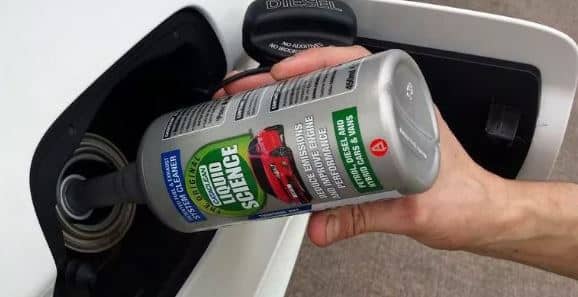
How to use a catalytic converter cleaner
Yet, we strongly recommend that you take several longer trips for a better effect. Motor-ways or mountain roads are perfect for this application. This is because the higher engine loads will ensure constant high exhaust temperatures. However, avoid driving in high revs for a prolonged period during the cleaning process. A high exhaust gas flow rate combined n with the cleaner may overheat the catalytic converter.
How Do Catalytic Converters Work?
The emission control system in your car has one main purpose. And that is to reduce the number of harmful pollutants that are released into the atmosphere. A catalytic converter is the most important component of this system.
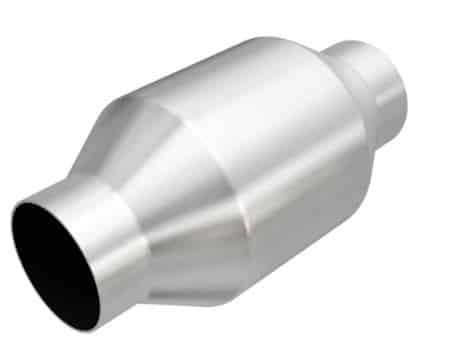
Best cat converter cleaner
It transforms toxic and environmentally unfriendly gases into less harmful ones. In theory, catalytic converters should last as long as a car. In real life, things are not that simple. Exhaust temperatures need to be rather high for the catalytic converter to work properly. This temperature is usually reached after 5-10 miles of normal driving. So, if you have a lot of short drives, your catalytic converter might be clogged up. To make things worse, that is not the only thing that can cause clogging. Low-quality fuel, poor engine maintenance or high oil consumption will also contribute to clogging up.
What Is A Catalyst In A Catalytic Converter?
First of all, let’s see what is a catalyst. This is a substance that causes or accelerates a chemical reaction without itself being affected.
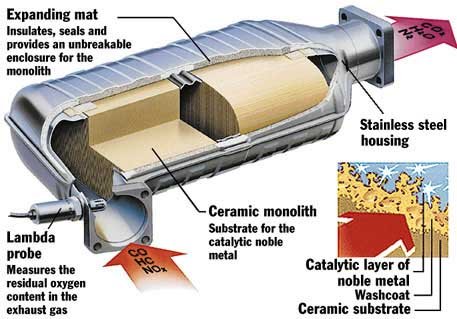
Catalytic converter catalyst
Any catalytic converter has four main components:
- Casing - this is an elongated metal cylindrical container. It holds the catalyst support, and it is thermally insulated from the outside.
- Catalyst support - inside the casing there is a mesh core that looks like a honeycomb. This is called a or a substrate, and it carries the catalyst. This core is made either out of ceramic or out of metal.
- Washcoat - carries the catalyst material which is suspended in it. This is used to dispense it over the catalyst support and achieve a larger contact surface.
- Catalytic layer - it is made from elements that trigger a redox reaction that converts pollutants and toxic gases into less harmful ones. Metals usually used as a catalyst are platinum, palladium or rhodium.
Types of Catalytic Converters
- Two-way or oxidation catalytic converter reduces the amount of carbon monoxide and hydrocarbons. They are used in diesel-powered cars, as well as in older gasoline cars.
- Three-way catalytic converters reduce the amount of nitrogen oxide, as well as the amount of carbon monoxide and hydrocarbons. They are used in all modern gasoline powered cars.
So, what causes damage to your catalytic converter, making it inefficient? Before we get to that, it is important to distinguish two main failure types:
- Melted or collapsed core: This happens as a result of an extreme temperature within a catalytic, and it is caused by a misfire or excessive oil consumption. Unfortunately, such damage cannot be repaired, and the only option is a replacement.
- Clogged up catalytic converter: Here you will have a core that is still good, but is covered with a carbon build-up. This reduces the surface for the exhaust gas comes in contact with the catalyst. There are several situations that can cause a carbon build-up, ranging from driving habits to an engine that doesn’t run well. Whatever the cause, you can still restore it by cleaning.
What Can Cause Catalytic Converter Failure?
- Poor fuel quality
- Leaded gasoline usage
- Dirty fuel injectors
- Engine that runs rich
- High oil consumption
- Poor car maintenance
- Frequent short trips
If you have anything of mentioned above, you should consider cleaning your catalytic converter. This goes even if you don’t experience any symptoms, as prevention is the best cure when it comes to emission control.
Conclusion
In conclusion, periodically using the best catalytic converter cleaner will ensure that your exhaust system is running free from carbon and soot deposits while enhancing the performance of your vehicle at the same time. Most of these cleaners also tackle the issue of invigorating the oxygen sensor. The oxygen sensor is installed after the CC because they need to monitor if the burning of the soot levels is being performed efficiently which they do by taking voltage measurements.
If you’re are skeptical if any of these cleaners will still work with your vehicle, you can always use the vehicle configurator on Amazon which will automatically calculate its compatibility with your truck. If not, you can leave us a comment, and we’ll be happy to help you out. Always make sure that you do not delete the emissions technology on your car or truck but learn to maintain it!
 by
by 